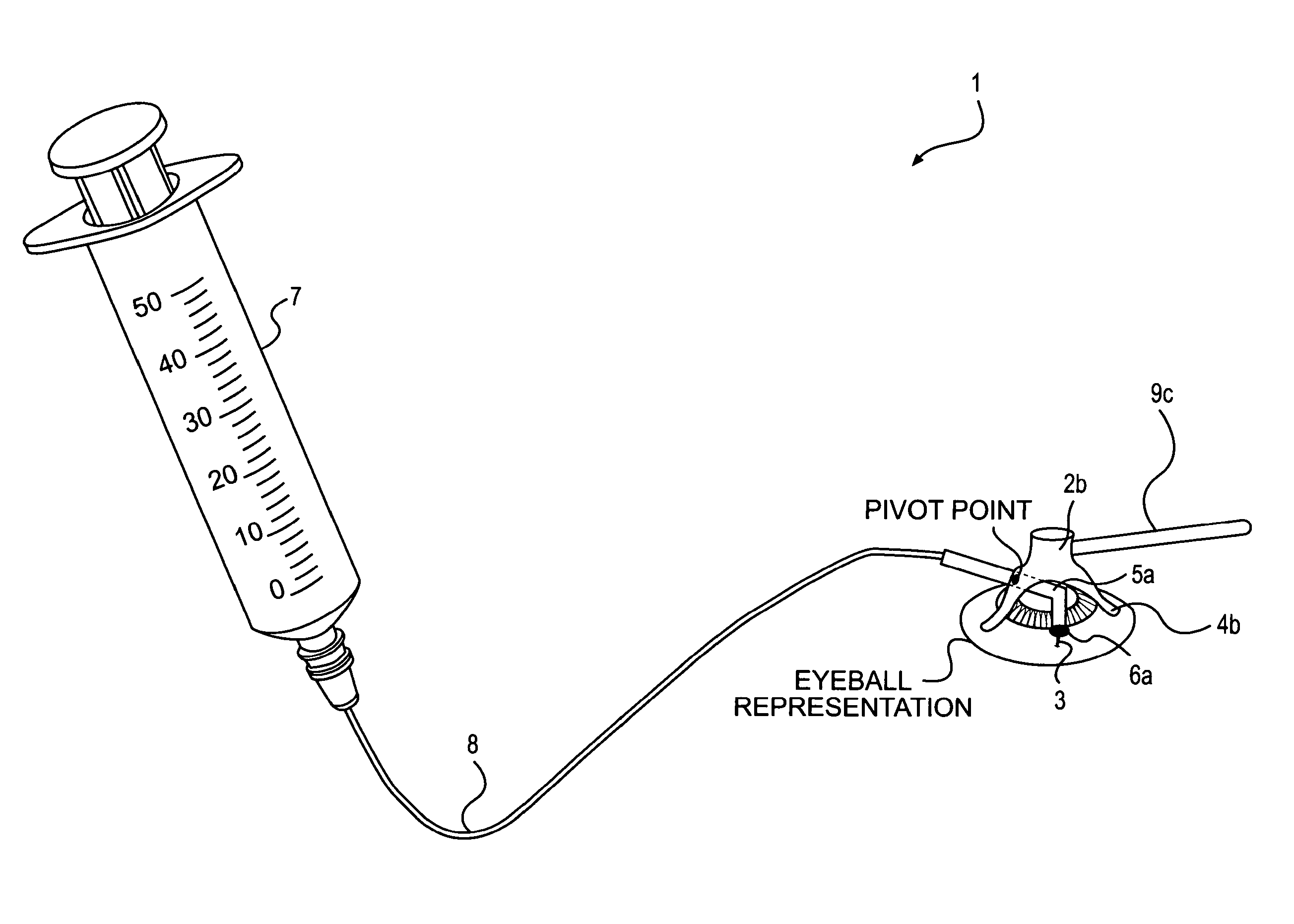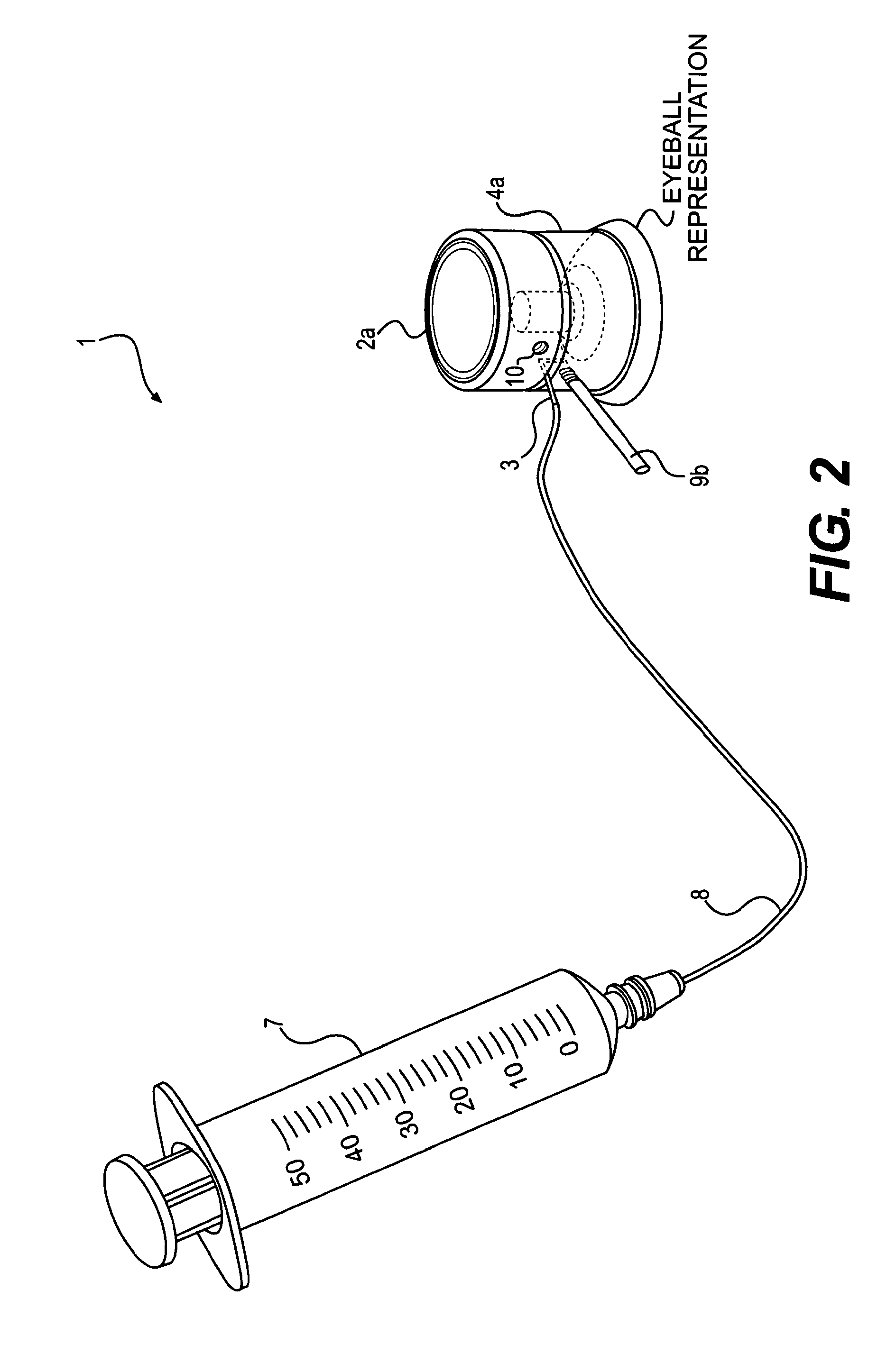Device and method for the controlled delivery of ophthalmic solutions
a technology of ophthalmic solution and device, which is applied in the direction of eye treatment, infusion needle, peptide/protein ingredients, etc., can solve the problems of corneal refraction change, vision impairment, and corneal weakening
- Summary
- Abstract
- Description
- Claims
- Application Information
AI Technical Summary
Benefits of technology
Problems solved by technology
Method used
Image
Examples
example
Comparison of Corneal Hysteresis in LASIK Patients Superficial Decorin Eye Drops vs. Needle-Injected Decorin
[0088]Testing has shown that needle injection of decorin to subsurface regions of the stroma produce greater improvements than merely administering drops containing decorin to the stromal bed. The following data illustrates the benefit of subsurface injections as compared to superficial drops.
[0089]The effects of decorin application on the biomechanical properties of the post-LASIK cornea were measured in five human myopic LASIK patients in a pilot study performed by Gabriel Carpio, MD at the Hospital Angeles, Mexico. Two drops of decorin solution were applied to the stromal bed during the LASIK procedure and one drop to the back of the surgical flap. In each patient, both eyes were subjected to LASIK, but only one eye received the decorin treatment (the treated eye). The other eye did not receive the decorin treatment and served as a control (the untreated eye). The biomechan...
PUM
| Property | Measurement | Unit |
|---|---|---|
| thick | aaaaa | aaaaa |
| thick | aaaaa | aaaaa |
| thick | aaaaa | aaaaa |
Abstract
Description
Claims
Application Information
 Login to View More
Login to View More - R&D
- Intellectual Property
- Life Sciences
- Materials
- Tech Scout
- Unparalleled Data Quality
- Higher Quality Content
- 60% Fewer Hallucinations
Browse by: Latest US Patents, China's latest patents, Technical Efficacy Thesaurus, Application Domain, Technology Topic, Popular Technical Reports.
© 2025 PatSnap. All rights reserved.Legal|Privacy policy|Modern Slavery Act Transparency Statement|Sitemap|About US| Contact US: help@patsnap.com



